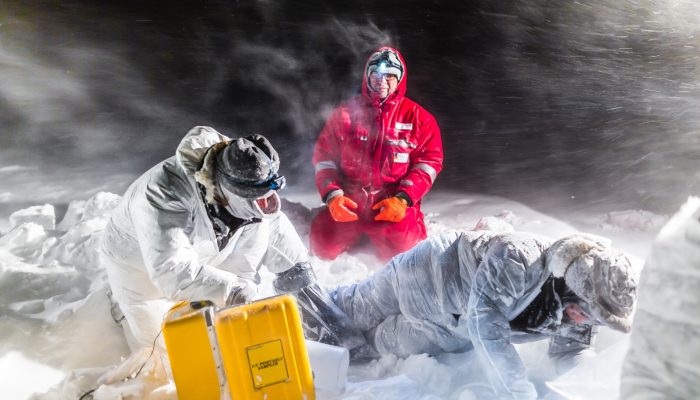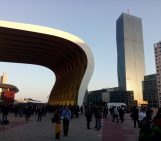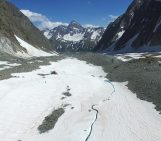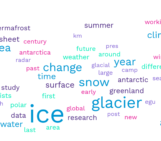
Sea ice brine sampling is always great fun, but sometimes somewhat challenging !
As sea water freezes to form sea ice, salts in the water are rejected from the ice and concentrate in pockets of very salty water, which are entrapped within the sea ice. These pockets are known as “brines”.
Scientists sample these brines to measure the physical and bio-geochemical properties, such as: temperature, salinity, nutrient, water stable isotopes, Chlorophyll A, algal species, bacterial number and DNA, partial pressure of CO2, dissolved and particulate Carbon and Nitrogen, sulphur compounds, and trace metals. All of this helps to better understand how sea ice impacts the atmosphere-ocean exchanges of climate relevant gases.
In theory, sampling such brines is very simple: you just have to drill several holes in the sea-ice ensuring that the holes don’t reach the bottom of ice and wait for half an hour. During this time, the brine pockets which are trapped in the surrounding sea ice drain under gravity into the hole. After that, you just need to sample the salty water that has appeared in the hole. Simple…
…at least it would be if they didn’t have to deal with the darkness of the Antarctic winter, blowing snow, handling water at -30°C and all while wearing trace metal clean suits on top of polar gear…hence the faces!
This photo won the jury prize of the Antarctic photo competition, organised by APECS Belgium and Netherlands as part of Antarctica Day celebrations (1st of December).
All the photos of the contest can be seen here.
Edited by Sophie Berger and Emma Smith
Jean-Louis Tison is a professor at the Université libre de Bruxelles. His activities are focused on the study of physico-chemical properties of « interface ice », be it the « ice-bedrock » (continental basal ice) , « ice-ocean » (marine ice) or « ice-atmosphere » (sea ice) interface. His work is based on numerous field expeditions and laboratory experiments, and on the development of equipments and analytical techniques dedicated to the multi-parametric study of ice: textures and fabrics, stable isotopes of oxygen and hydrogen, total gas content and gas composition, bulk salinity, major elements chemistry…





Pingback: Cryospheric Sciences | Image of the Week – Icy expedition in the Far North